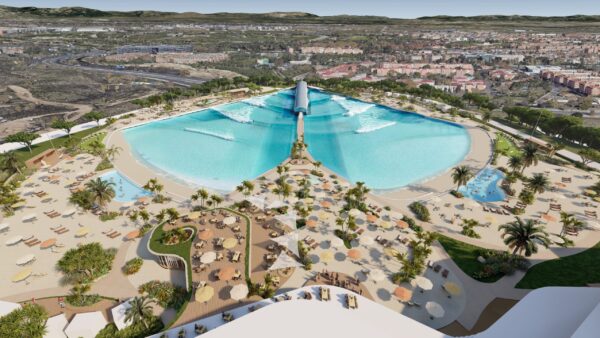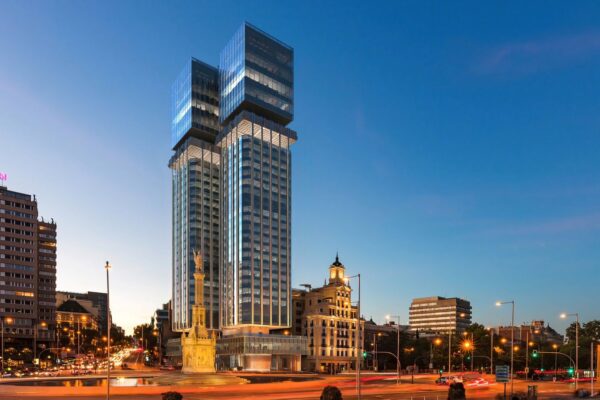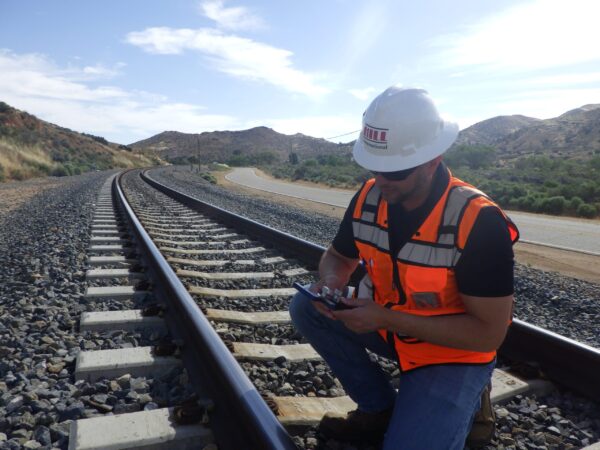
March 12, 2025 | Articles
Get Stoked: Hill International Makes Big Waves in Spain’s Surfing Scene

Powering a country the size of India is no small task. Accordingly, India is one of the largest consumers of oil in the world. The state-owned Indian Oil Corporation, Ltd. (IOCL) is the largest commercial oil company in the nation and directly involved with accessing India’s own reserves, refining crude oil, distributing oil to consumers, and researching innovative petrochemical products and solutions. The company is also seeking ways to remedy India’s reliance on foreign energy sources.
To support their goals, IOCL recently initiated a project to construct a new Technology Development and Deployment Centre. The company has a strong background in research and development (R&D), with over 1,000 patents on products involved in the hydrocarbon value chain. Most of the company’s research takes place at its existing R&D campus at Sector-13, Faridabad. Opened in 1972, this facility lacks space for further expansion to support research into the myriad of exciting new scientific disciplines critical to the company’s business plans.
The new $275 million Technology Development and Deployment Centre is being developed on a 60-acre plot in Faridabad, near the existing campus. Employees at the new R&D Centre will focus on the development of a wide range of energy technologies and solutions involving refining technology, petrochemicals, applied metallurgy, biotechnology, pipelines, catalysts, carbon nanotechnology, batteries, and alternative energy.
Apart from its core research goals, the Centre will also take developed technologies to the commercial deployment level with pilot plants, scale-up plants/process units, demonstration scale plants/process unit plants, as well as semi-commercial scale plants.
Construction Begins
On June 29, 2020, Cabinet Minister for Petroleum & Natural Gas and Steel in the Government of India Shri Dharmendra Pradhan and Haryana Chief Minister Shri Manohar Lal came together with IOCL to lay the foundation stone of IOCL’s new Technology Development and Deployment Centre. The presence of the Ministers demonstrated the importance of this new facility to the nation’s goals of being energy independent.
In order to help achieve their goals for the campus, IOCL selected Hill International Project Management India Pvt. Ltd. to support the project with project-management consultancy services. Hill’s local team will execute their consulting work via an engineer-procure-construction (EPC) contract with handover to IOCL scheduled for early 2023.
When complete, the new facilities will include offices, research laboratories, conference rooms, pilot plants, a theatre complex for lectures, multipurpose halls, and a visitor centre. Outdoors, the campus will feature surface-level and belowground parking, charging facilities for electric vehicles, a recreation zone, integration of public and private transport, solar panels, internal roads, pathways, signage, murals, water features, rain water drainage and rain water harvesting, irrigation system, landscaping, hardscaping, and green corridors, among other green features.
Green Goals
IOCL is taking steps to develop and deploy alternative energy sources to meet the energy demands of the world’s second most-populous country and to reduce the country’s carbon footprint.
The new campus will support IOCL’s green goals in both form and function. The campus itself is envisioned as the world’s largest and most sustainable net-zero campus, a next-generation facility that meets top quality standards of research, occupational health and safety, and sustainability. The campus aims for GRIHA-5 and LEED Platinum ratings.
The Centre has an anticipated annual energy demand of 15,870 MWh. The facility will fulfil this energy need by the installation of solar PV panels on a 70,000 SM raised, curving platform which runs above the spine of the entire complex.
Other sustainable project goals will be met by construction activity pollution prevention, water-use reduction, fundamental commissioning of building energy systems, minimum energy performance, fundamental refrigerant management, storage and collection of recyclables, minimum indoor air quality performance, and environmental tobacco smoke control.
The project’s designers emphasized other future-friendly and sustainable features as well. Almost 33% (77,000 SM) of the total site area has been dedicated to landscape, bicycle lanes, and spacious walkways. Additionally, the project incorporates 44 electric vehicle charging stations, which is more than 6% of the total parking spaces.
Beyond the form of the facility, one of the key areas of research for employees on the campus will be alternative and renewable energy. In fact, one of the four major centres of the campus will be dedicated to studying and developing products to support the implementation of green energy sources. This Indian Oil Centre Alternative & Renewable Energy facility, or i-CARE, will consist of labs, pilot plants, and demonstration units for full-scale research and technological development involving hydrogen, fuel cells, solar power, gasification, bio-energy, carbon dioxide capture and utilization, and energy storage technologies.
Integrated Design
The Technology Development and Deployment Centre is planned with built-up area of approximately 145,000 SM organized in seven building blocks. These building blocks consist of four major groups. Block A, Block B, Block C, and Block D are primarily laboratories, where the actual research of the Centre will be carried out. Block E is an administrative block, Block F is for visitors, and Block G houses utilities.
A central nexus divides the campus into two major sections. At the nexus sits the Centre’s central administrative facility, which will host a large shaded area and send forth two wings of raised, curving solar panels. These wings make up the spine of the complex.
In addition to these physical divisions, the campus will be divided conceptually into four major centres of research. In addition to the i-CARE facility focused on alternative and renewable energy, the other centres will focus upon nanotechnology, synthetic biology, and corrosion research.
Despite the physical division of the complex, IOCL envisions a highly integrated campus. The modern learning and working environment has evolved from a traditionally passive model into a problem-solving model that encourages cross-discipline collaboration. Thus, the design of the facility combines engineering/technology offices, experimental R&D laboratories, and pilot plants/demonstration/semi-commercial scale-up units so that interdisciplinary scientists, engineers, business people, and support staff will be able to collaborate seamlessly and work towards the company’s ultimate goals.
To achieve these integrated design goals, the shape of the campus will imitate the leaves of a peepal tree, also known as the sacred fig tree. The peepal leaf symbolizes the flow of movement within the campus, emphasizing integration with central and peripheral circulation. As a central spine runs down the course of a peepal leaf, a central, curving line will dominate the built-area of the new campus—the same raised, curving platform that protrudes in two directions from the central administrative facility. Veins branch out from the spine of the leaf to a unified periphery. Likewise, individual components and blocks of the campus will stretch to the periphery of the campus from the central curve. This central spine creates and connects the building blocks of the whole.
India’s Energy Future
In parts of Indian culture, the peepal tree is an object of reverence. Many great thinkers have been said to sit, learn, and teach under the tree. In IOCL’s new Technology Development and Deployment Centre, the next generation of great thinkers will work for a more energy-secure future for their country. The peepal-leaf design provides for a functional and beautiful space, integrated to facilitate collaboration. Likewise, the leaf symbolizes a commitment to connect with nature and harness energy from renewable and clean sources.
At the conclusion of the project, IOCL will have the world’s largest and most sustainable net-zero campus, hundreds of scientists and business people will collaborate daily on improving the hydrocarbon value chain with new technology, and the nation of India will be one step closer to an energy-secure future.
“It is a great honor to have been entrusted with the Indian Oil Technology Development and Deployment Center,” said Hill Chief Executive Officer Raouf Ghali in the company’s recent press release. “Indian Oil Corporation’s selection reflects a global trust in our abilities to successfully deliver complex and technically innovative projects. Hill also takes great pride in helping to support ambitiously green projects. And we hope to paradigmatically demonstrate with the completion of this project our regional excellence in India.”
Project Partners
In addition to the project management consultants at Hill International, IOCL’s project partners include ONG&ONG and Research Facilities Design (RFD).
ONG&ONG’s role for the IOC’s new Centre is as an architectural lead partner, conceptualizing the intent, understanding the brief, and providing solutions to make the Centre stand on the international platform. With their extensive international experience, they are sure to bring an exceptional architectural vision to the project.
Research Facilities Design (RFD) is a firm of laboratory design consultants. The firm has extensive experience with principal involvement from the inception of design through the construction process.
RFD’s role as laboratory designer is to understand each and every requirement for the research facility and provide innovative solutions to suit the criteria of the client’s brief. RFD is playing a critical role for IOC’s Technology Development and Deployment Centre as their laboratory and plant design has served as the basis of the architectural concept as showcased in the proposed scheme.
Share

March 12, 2025 | Articles
Get Stoked: Hill International Makes Big Waves in Spain’s Surfing Scene

March 9, 2025 | Articles
Project Manager TJ Pinales: Helping Along the Road in San Antonio

March 4, 2025 | Articles
Balancing the Equation: An Interview with Project Manager Tracy Wiyrick

March 1, 2025 | Articles
A Lifelong Project: Calypso Kyriakopoulou’s Multifaceted Career in Construction

February 10, 2025 | Articles
Dual Delivery: A Viable Strategy for Complex Transit Projects

January 23, 2025 | Articles
Plotting a Roadmap to Success on the Torres de Colón Renovation

December 12, 2024 | Articles
Progressive Design-Build for Rail and Transit Projects: Room to Run

December 9, 2024 | Articles
Unlocking Growth: Maximizing the Benefits of the SBA’s Mentor-Protégé Program

December 8, 2024 | Articles
Mediterranean Luxury a Century in the Making: Four Seasons Resort Mallorca at Formentor